Application modernization is a process that improves how well a business delivers software by updating old legacy software systems instead of replacing them. For many organizations, this means moving existing legacy workloads to a modern cloud platform and breaking up large applications into smaller pieces, like microservices.
Depending on the application and company, there are different ways to update it, from small changes to complete replacements. Customers update their apps so they can take advantage of new cloud computing features.
The challenges of legacy applications
"If it works, don't touch it," is a common motto for developers when it comes to old technologies. For example, many businesses still use COBOL apps that were made decades ago. They work quickly and seem to be very stable. But what if you need to change something or figure out what's wrong? It's hard to find a COBOL developer to hire.
The people who made these old apps are probably no longer working, and young developers don't want to learn how to use them. Even if you find one, they will spend weeks or months trying to figure out how the code works before they can make the change.
Quite often, you might be using software from a third party that is no longer supported. Then you are completely stuck and can only hope it keeps working and no major security flaws are found until you can get a new one.
What problems need to be fixed right away that affect both technical and digital transformation? And how can this be dealt with in application development?
- Business agility: How do businesses keep their business models flexible so that they can adapt to changing needs? IT is pretty rigid, stuck in cycles of updates and upgrades, and software solutions are bought and used for years. How could this be different?
- Transformations roadmap: How can a plan be made for changing the way applications work?
- Budget allocation: How can the budget for innovation be increased and the money spread out? Can jobs be switched around to free up money for new, creative projects?
- Current data stock: How can the data that already exists be used to make processing better?
- User experience: How happy are customers and employees with the applications that are currently available? Can working in a facilitated way add value?
How Application Modernization is conducted?
Application modernization focuses on making software that meets the specialized needs of companies. A tried-and-true process is used to figure out which path is best for each company and its needs.
The best way to update applications depends on how you answer the following questions:
- How do we want things to turn out?
- What do we have to work with?
- Do we own the source code for the application? Can we change it?
- Do other programs need the program in question, or does it need them?
- How important is the downtime of the application? Does it need to run all the time?
This is how to get to modernization:
- Design Thinking: (What is desired? What is the requirement?)
- Lean Startup: (What's the answer? Which method should be used?)
- Agile Project: (Development of software with modern, iterative methods)
Approaches to Application Modernization
Application modernization is based on a number of technologies that work together.
- Cloud Computing: When people talk about "application modernization," they usually mean the process of moving old apps to the cloud so they can run in newer environments. These are public cloud platforms, private clouds, and hybrid clouds, which are usually public and/or private clouds that are connected to environments on-premises.
- Containers: Containers are a way to package, deploy, and run applications and workloads in the cloud. Containerization's big-picture benefits include better scalability, portability, and operational efficiency, which makes it a good fit for cloud infrastructure, especially multi-cloud and hybrid cloud environments.
- Microservices: Microservices aren't so much a technology as they are a choice about how to build something. You don't build and run an application as a single, complete codebase, which is usually called a monolith or monolithic development. Instead, you separate the different parts into smaller, separate pieces that can be deployed, updated, and run on their own.
- Orchestration and Automation: In software development, orchestration is the process of automating many of the operational tasks related to containers, such as deployment, scaling, and networking. Automation is an important idea and technology in general, as it is becoming more and more important to make sure that development, operations, and security teams can manage their modern apps at scale in a sustainable way.
- Rehosting and Replatforming: With rehosting, an application can be moved to a new data platform, server, or data center. Replatforming lets the platform that the application runs on be changed.
How Definity First can help?
With our Application Modernization Services, your business can become more flexible, productive, and efficient, and you can get solutions that work on any device. Our software development strategy cuts down on the time it takes for the software to be ready for the market.
With more than 18 years of experience, we've learned how to convert, rewrite, and update applications to keep them useful. Our legacy app modernization specialists talk with and advise companies on their needs as they move toward digitalization. This includes design thinking and digital assessments to help companies understand their business goals and their digitalization and automation goals.
We can provide:
Managed Application Services: Help from application technicians and infrastructure consultants to support your operations as a whole, as well as any custom software we made for you. This also includes consulting and thoughts about security.
This makes old applications less risky and less inefficient since we use the latest cloud-based technology to make software. The design of cloud architecture makes it easier to combine applications and data. It also reduces the risk of downtime because it is more reliable and has functions for dealing with disasters.


